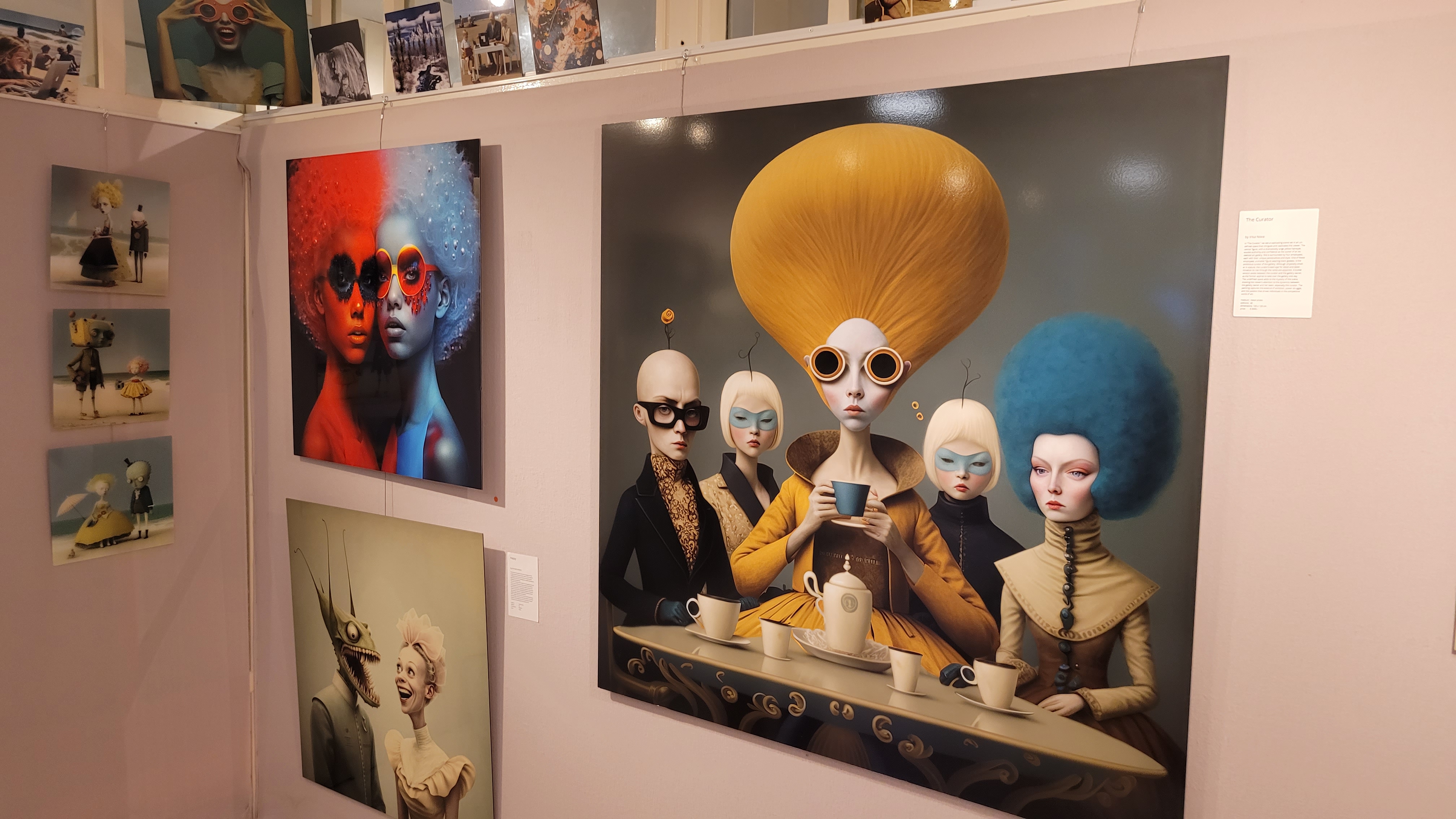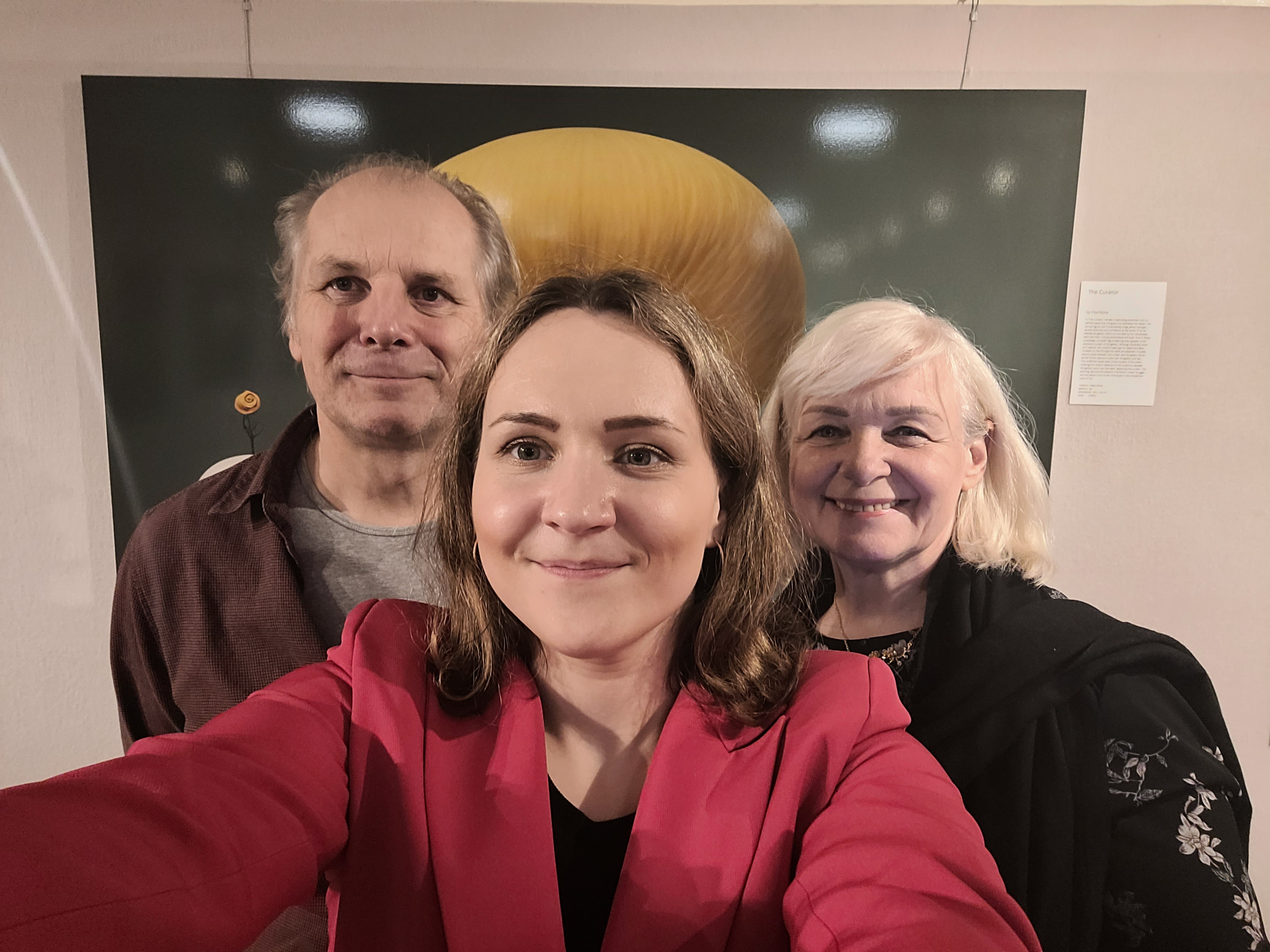Will Artificial Intelligence Conquer the World of Art?

Dead End Gallery
As the debate continues over whether artificial intelligence can compete with human creativity, scientists are looking for answers at the epicentre of evolutionary events. Prof. Dr Virginija Jurėnienė, a historian at the Kaunas Faculty of Vilnius University (VU), together with Ugnė Pavlovaitė, a PhD student at the Kaunas Faculty of Vilnius University (VU), visited Dead End Gallery – the world’s first physical artificial intelligence (AI) gallery located in the Netherlands as part of the Erasmus+ staff mobility programme. They shared their impressions after meeting the gallery’s co-founder, Constant Brinkman.
The world’s first art gallery created by artificial intelligence machines and algorithms was opened in Amsterdam in early 2023. Located in the central De Wallen district, the gallery showcases inventive works created by AI algorithms, from digital paintings to interactive installations.
Artificial Art Created by AI Artists
According to the authors of the idea, the artists create themselves! “Through open-ended questions, the characters come up with their own stories, personal experiences, and emotions, including their perspectives on art and preferences. They slowly develop a sort of awareness with a depth and, hopefully in the near future, soulfulness,” - remarks Constant Brinkman.
Evolving self-awareness and depth in the AI artists naturally extend into their artistic expression. These artificial artists then went on to create their own works of art. “It is sensational that the founders of Dead End Gallery have managed to turn the AI module into a semi-autonomous art creator by posing the most abstract possible questions to the language model, which even extracts the various life stories of the creators, distancing itself from the accuracy of the algorithms that are being developed, or, in other words, by preserving the authenticity of artificial intelligence as the author of the artwork and opening up the space for experimentation,” says Ugnė Pavlovaitė, adding that some of the works look as if they are from a fantasy world and are even somewhat creepy.

From the left: Constant Brinkman, PhD Ugnė Pavlovaitė, Prof. Dr Virginija Jurėnienė
“Although each of the works is technically unique, they are not flawless,” observes Prof. Dr Virginija Jurėnienė. Brinkman explains that AI-based artists are gaining more and more experience, which is leading to rapid improvements in their work. He says that such art not only captivates the senses but also encourages us to talk about the future of creativity. “In a world that is constantly being redefined by technology, Dead End Gallery is becoming a beacon of innovation and artistic expression. Here, the timeless charm of art merges with the limitless possibilities of artificial intelligence, and each work bears witness to the symbiotic dance between human ingenuity and machine precision,” he says.
AI Engagement Poses New Challenges
One of the gallery’s most significant works is The Curator. The AI artist, Irisa Nova, has set the value of the painting herself, ranging from €3,000 to €10,000, and there is no shortage of attention from potential buyers. Constant Brinkman says that even professional, renowned artists and collectors do not bypass the gallery to add futuristic works to their collections.
But there is also a flip side to AI art. As one of the creators says, he often receives various questions about the artistic value of his works because “there is no soul behind them”. This is also noted by Prof. Dr Virginija Jurėnienė: “The paintings we see are reminiscent of postcards, high-quality book illustrations, but not painterly works of high art. They seem to lack an inner force or energy that attracts and makes you think, affirm or deny. I think this is just the beginning of the art created by artificial intelligence.” She finds that the mere introduction of generative AI models into the field is leading to a redefinition of the perception of art.
Changing Perceptions and Value of Creativity
The case is commented on by Dr Šarūnas Grigaliūnas, associate professor at the Kaunas Faculty of Vilnius University. According to him, creativity, especially when it comes to generative models and art, is an interesting and multidimensional concept. In painting, it is considered to be the creator’s ability to convey emotions, perspective and personal experience through visual means. The artist’s soul is transferred onto the canvas in a way that makes each work unique and reflects an inner world. “Currently, most human-computer interactions take place through means such as keyboards, pens or touch screens, but in the future, there may be more direct forms of communication. For example, thought-based interfaces, where ideas and visions can be transmitted directly from thoughts and feelings to the machine, without the use of physical means,” says Dr Šarūnas Grigaliūnas.
The researcher believes that generative models such as GPT-4, which are able to create content based on the data they have been trained on, replicate the human emotions, thoughts and experiences encoded in the data from which they have learned and demonstrate a reflective capacity akin to a “collective human soul”. These models can generate images, music, text or other art forms. They learn from content they have already created and can create new work that reflects the styles, patterns and themes of their training data. “Try to imagine that there is already a possibility of preserving history, of carrying it thousands of years into the future by digitising human emotions using generative models,” he provokes us, arguing that the genesis of these elements creates a creativity that ranges from the deeply personal and human (the transmission of the soul through traditional painting) to the modern and technological (using artificial intelligence and future thought-transfer interfaces). “This spectrum shows that creativity is not static but evolves with our tools and understanding, from paintbrushes to algorithms,” says the associate professor.
Šarūnas Grigaliūnas argues that creativity should be seen as a constant dialogue between human experience and technological progress. “It is a process that reflects not only what it means to be human but also how we expand and express our humanity through the latest tools. As we develop new ways of interacting with machines – from keyboards to thought interfaces – the possibilities for our creative expression are expanding, opening up new opportunities for art that can fuse human emotion, experience and the immense possibilities of artificial intelligence,” he said.
According to Constant Brinkman, the co-founder of Dead End Gallery, the fear of being replaced by artificial intelligence is a question that has given rise to various debates, to which he responds positively, stressing that “artificial intelligence cannot replace humans, but if we don’t use it, we will be replaced... I believe that education is one of the most important tools to eradicate all fears”. The founders of the gallery carry out various educational activities in collaboration with institutions from different industries, with a particular focus on artists and their desire to develop their competencies. Ugnė Pavlovaitė adds that Dead End Gallery marks a new era of contemporary art, and just entering the gallery itself makes you feel like you are stepping into tomorrow.
Curated by Dead End Gallery, the collection features masterpieces by AI pioneers such as Irisa Nova, Maximilian Hoekstra, Lily Chen and Amani Jones, who create narratives that transcend digital boundaries.